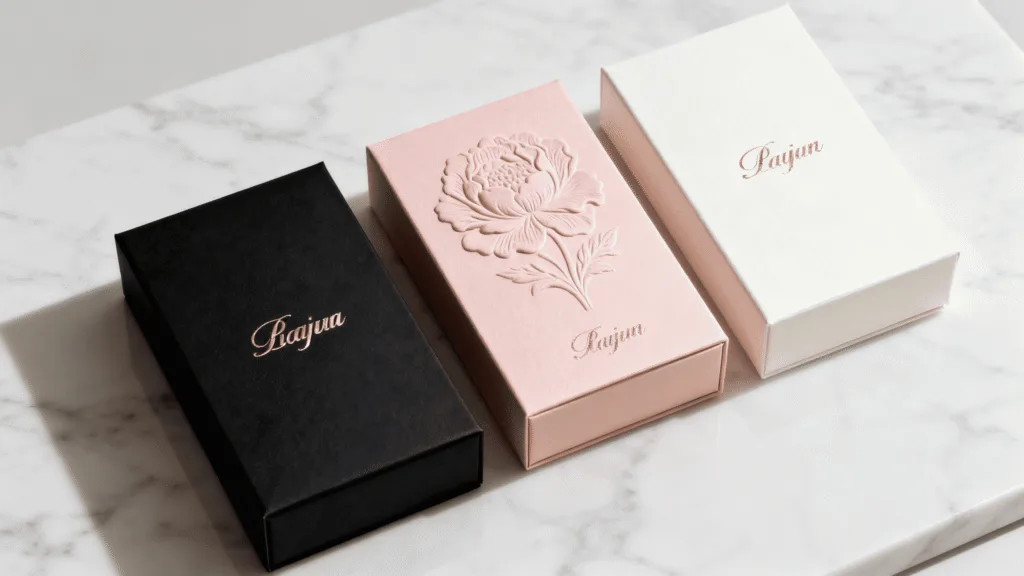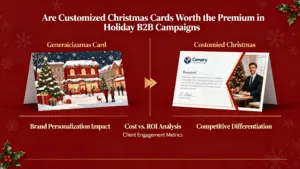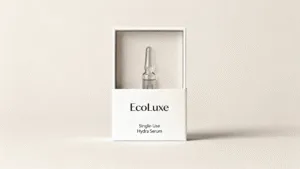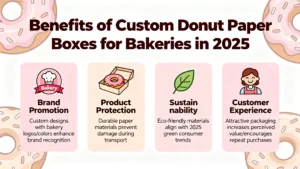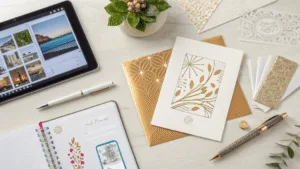Your cosmetic product is premium, but its packaging looks generic. On the shelf, it blends in, failing to communicate the quality within and getting overlooked by customers seeking a luxury experience.
Luxury finishes like foil stamping, embossing, and soft-touch coatings transform a standard paper box into a high-value sensory experience. They signal craftsmanship, quality, and exclusivity, directly increasing the product’s perceived worth and justifying a premium price point in the consumer’s mind.
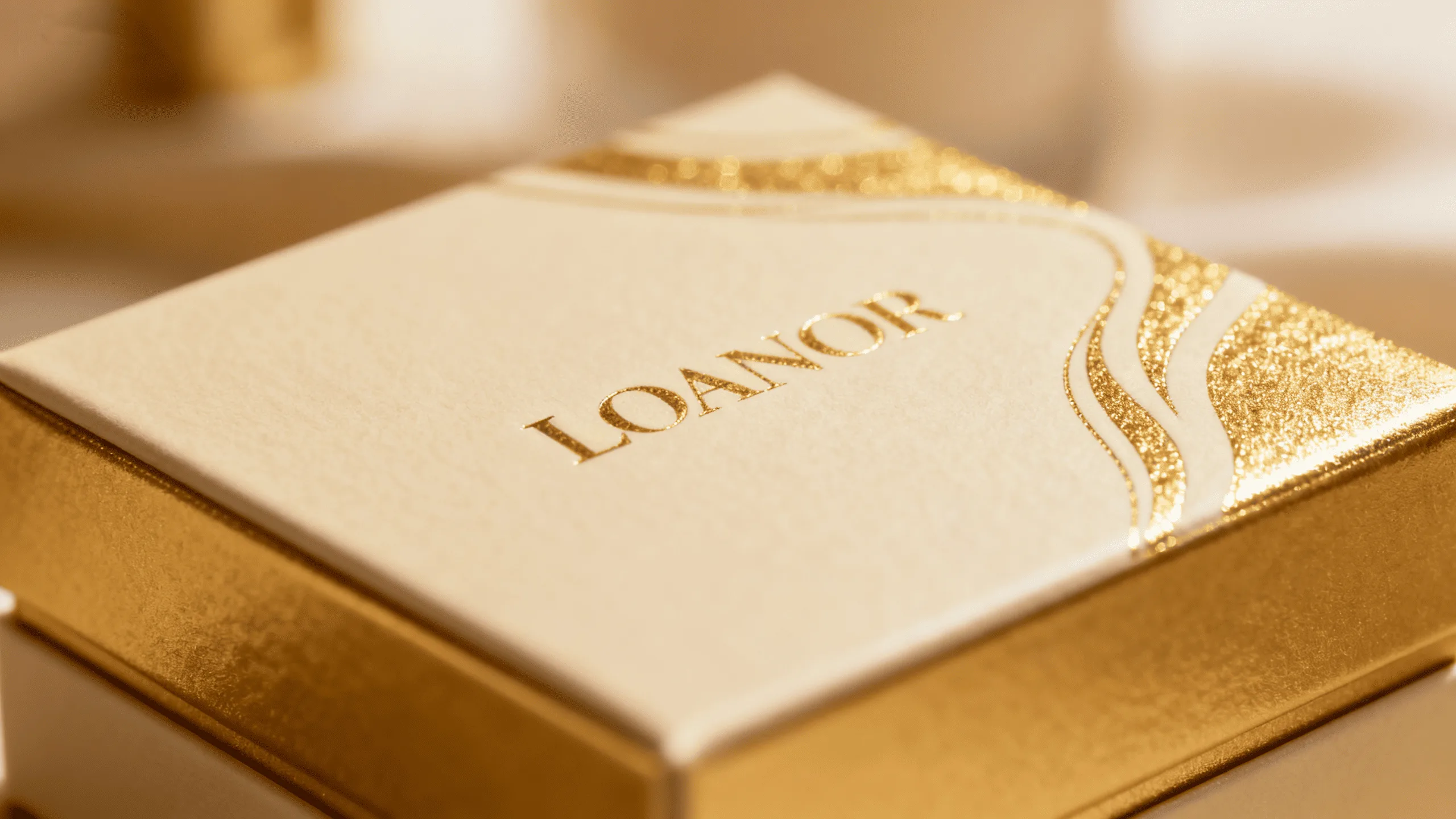
I’ve seen this happen time and again in my ten years in the packaging industry. A client develops a fantastic serum with high-quality ingredients, but they launch it in a basic printed box to save on initial costs. Sales are flat. The product is great, but the packaging tells a different story—one of being average. We once took a client’s existing box and made only two changes: we added a simple, elegant gold foil logo and applied a soft-touch matte lamination. The result? A significant uptick in retail sales and customer engagement. This isn’t magic; it’s the psychology of touch and sight. The right finish makes the packaging an active part of the product’s promise, telling the customer, "What’s inside is just as special as the box you’re holding."
How does foil stamping make a cosmetic box look more expensive?
Your product gets lost in a sea of competitors on a brightly lit retail shelf. It doesn’t catch the light, fails to draw the eye, and ultimately, doesn’t make it into the customer’s shopping basket.
Foil stamping adds a metallic or pigmented finish that reflects light, creating a powerful visual cue of luxury and expense. This flash of shine immediately captures attention, making the product stand out and feel more exclusive.
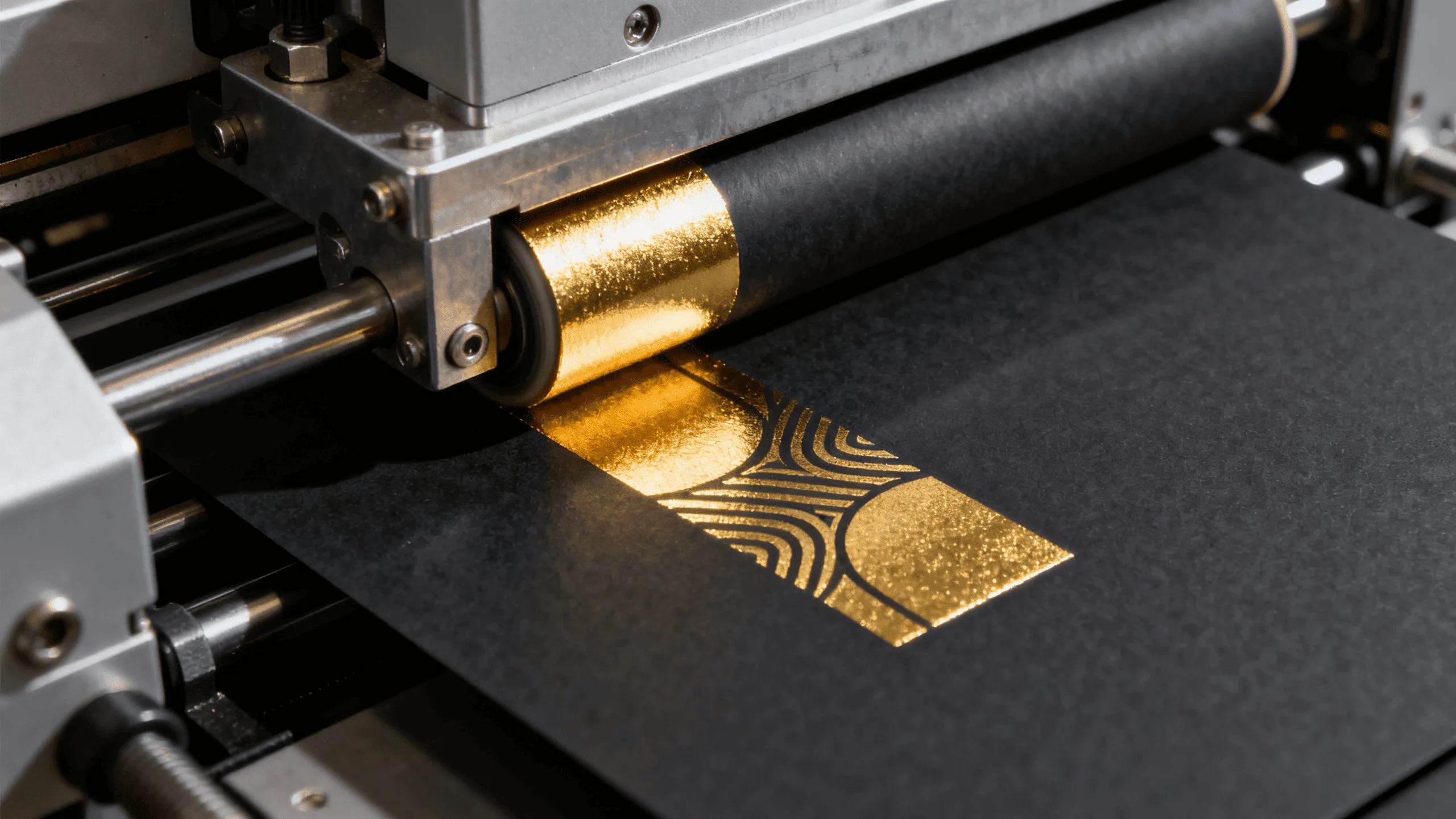
The power of foil is rooted in deep-seated human psychology. For centuries, reflective materials like gold and silver have been associated with wealth, rarity, and high status. When a customer sees that flash of metallic light on a cosmetic box, it triggers a subconscious connection to these concepts. It signals that the product is not ordinary. In the fast-paced retail environment, foil stamping is a strategic tool to interrupt a customer’s scanning gaze. It creates a point of focus. I always advise my cosmetic brand clients to use foil strategically on key elements like the brand logo, product name, or a unique pattern. The color choice is also critical. Gold foil often conveys classic luxury and anti-aging properties, silver can suggest a clean, clinical, or scientific formulation, while rose gold appeals to a modern, trend-conscious demographic.
The Psychology of Shine
Foil’s reflective quality1 does more than just look pretty; it communicates value. The brain associates shiny, metallic surfaces with precision and quality manufacturing, leading customers to assume the product inside is made with similar care. It’s a non-verbal promise of excellence.
Smart Application
Overusing foil can make a design look gaudy. The most effective applications are often the most restrained—a crisply stamped logo or a delicate border. This subtlety suggests a quiet confidence2 in the brand’s quality, which discerning customers appreciate.
What role does embossing play in creating a tactile brand experience?
A customer picks up your box, but it feels flat and lifeless. The interaction is brief and forgettable. There is no physical connection to your brand, no reason for them to hold on and consider the purchase further.
Embossing (raising a design) and its counterpart, debossing (indenting a design), create a three-dimensional surface that invites touch. This tactile engagement makes the brand more memorable and conveys a sense of detailed craftsmanship and superior quality.

In an increasingly digital world, the power of touch is more significant than ever. When a customer runs their fingers over a raised logo or a subtly textured pattern on a cosmetic box, it creates a haptic—or touch-based—memory. This physical interaction is far more powerful and lasting than a purely visual one. It slows the customer down, encouraging them to spend more time with your product in their hands. In my experience, the longer a customer holds a product, the higher the probability of purchase, as a sense of ownership begins to form. An embossed detail suggests investment and care. It tells the customer that the brand didn’t cut corners; they invested in details that most companies skip. A "blind emboss," where a design is raised without any ink or foil, is a particularly powerful signal of understated, confident luxury. It’s a detail meant to be discovered, creating a special moment between the customer and the brand.
Building Brand Memory
The physical sensation of an embossed logo1 can become a signature for your brand. Regular customers will begin to recognize your product by feel, creating a deeper level of brand loyalty that goes beyond just visual recognition.
Conveying Quality
The crisp, clean edges of a well-executed emboss require high-quality paper stock and expert manufacturing. This detail subconsciously communicates to the customer that the product itself is likely made from high-quality materials2 and with the same attention to detail.
Your packaging feels like standard, generic cardboard. The texture does nothing to reflect the smooth, silky, or hydrating promise of the cream or serum inside. This creates a sensory disconnect that undermines your product’s marketing message.
A soft-touch finish provides a velvety, matte texture that feels uniquely luxurious and pleasant to hold. This premium tactile sensation slows down the customer’s interaction, creating a perception of higher quality and reinforcing the product’s promise of a smooth application.

The effectiveness of a soft-touch finish lies in a principle I call "sensory congruence." This means the feel of the packaging should align with the promised benefit of the product. When a customer is buying a foundation that promises a "flawless, smooth finish," and the box itself feels flawlessly smooth and velvety, it validates the product’s claim before it’s even been opened. This alignment builds instant trust and makes the marketing message more believable. A soft-touch lamination or coating has a low-sheen, matte appearance that absorbs light, making colors appear richer and deeper. This creates a visually sophisticated and modern look that stands out from standard glossy finishes. From a practical standpoint, it also helps to resist fingerprints, ensuring the package looks pristine on the shelf and in the customer’s home. The unique feel makes the unboxing experience more deliberate and enjoyable.
Comparing Common Laminate Finishes
Choosing the right finish depends on your brand identity and the product’s function. Here is a simple breakdown to guide your decision:
| Finish Type | Tactile Feel | Brand Association | Best For Products That Are… |
|---|---|---|---|
| Soft-Touch1 | Velvety, smooth, suede-like | Modern Luxury, Gentle, Premium | Serums, foundations, moisturizers |
| Matte Lamination2 | Smooth, non-reflective, flat | Sophisticated, Understated, Clean | Skincare, minimalist makeup lines |
| Gloss Lamination | Shiny, slick, reflective | Vibrant, Bold, Eye-catching | Lip gloss, highlighters, colorful palettes |
How do these finishes combine to justify a higher price point?
You see these luxury finishes as individual costs that add up, making you hesitant to invest. You’re not sure if combining them will truly deliver a return, and you struggle to explain the value to your finance team.
Combining finishes creates a multi-sensory hierarchy of value. The interplay between a visual element like foil and a tactile one like embossing creates a sophisticated, layered experience that signals exceptional quality, justifying a premium price and turning packaging into a profit driver.
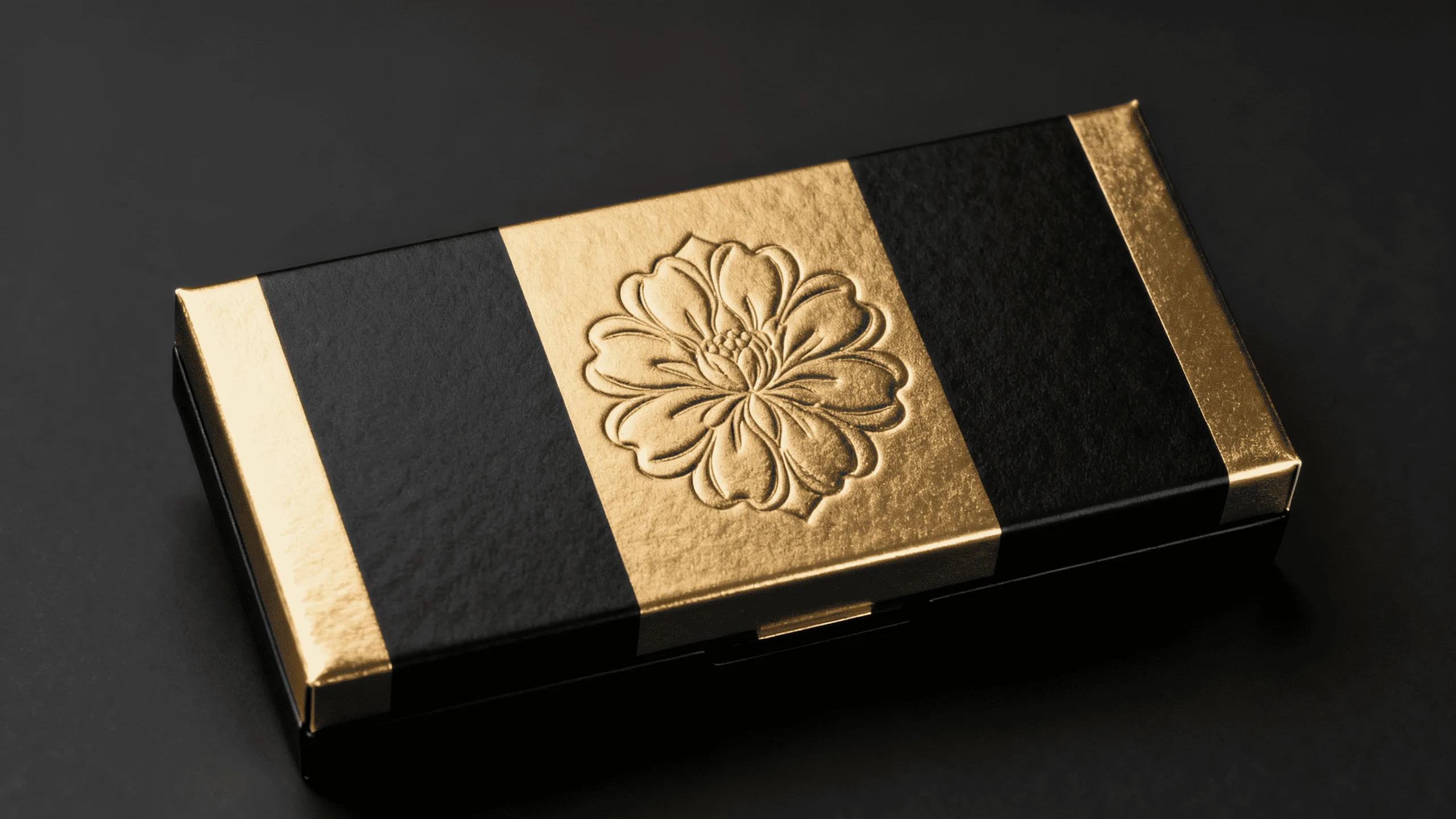
The true power of luxury finishes is unlocked when they are used in combination. Imagine a customer picking up a box with a soft-touch finish. Their first impression is one of smooth, gentle quality. As they look closer, their eye catches the bright gleam of a gold foil logo. Then, as they run their thumb over it, they feel the raised, crisp edges of an emboss. In just a few seconds, you have engaged their sense of touch twice and their sense of sight once, each interaction reinforcing the last. This layered experience makes the product feel incredibly well-considered and expensive. It transforms the unboxing from a simple action into a memorable ritual. This premium experience is precisely what customers are paying for—and what they are eager to share on social media. This turns your packaging into a marketing asset. The small incremental cost per unit for these finishes is easily offset by the higher retail price the product can command and the increased sales velocity it generates.
The ROI of Sensory Appeal
Investing an extra $0.15 per box on a foil and emboss combination might allow you to increase the product’s retail price by $5.00. This is because the perceived value1 has been elevated far beyond the actual cost of the finishes.
Creating a Brand Signature
A unique combination of finishes can become a recognizable signature for your brand. When customers see that specific mix of texture and shine, they will instantly associate it with your brand’s quality and aesthetic, building long-term brand equity2.
Conclusion
Luxury finishes are not mere decorations; they are strategic business tools. By engaging the senses of sight and touch, foil, embossing, and specialty coatings fundamentally alter a customer’s perception of your product’s value. They make your cosmetic box an active, persuasive part of your sales and marketing strategy.
Ready to see how the right finish can elevate your brand? Explore our custom cosmetic packaging solutions or contact us today for a personalized consultation.
FAQ
Are luxury finishes eco-friendly?
Many are. Modern advancements include recyclable foils and water-based, soft-touch coatings. A "blind emboss" uses no additional materials, only pressure. At Omet Packaging, we prioritize sustainable options and can guide you to finishes that align with your brand’s environmental goals.
What is the most cost-effective luxury finish to start with?
A simple, well-placed foil stamp on a logo or product name often delivers the highest visual impact for the investment. It immediately adds a premium feel without the cost of covering the entire box.
How do I choose the right finish for my brand’s identity?
Consider your brand’s personality. Is it modern and minimalist? A blind emboss on matte stock might be perfect. Is it glamorous and bold? A high-shine gold foil on a gloss box would work well. We always recommend starting with your brand story and choosing finishes that help tell it.

